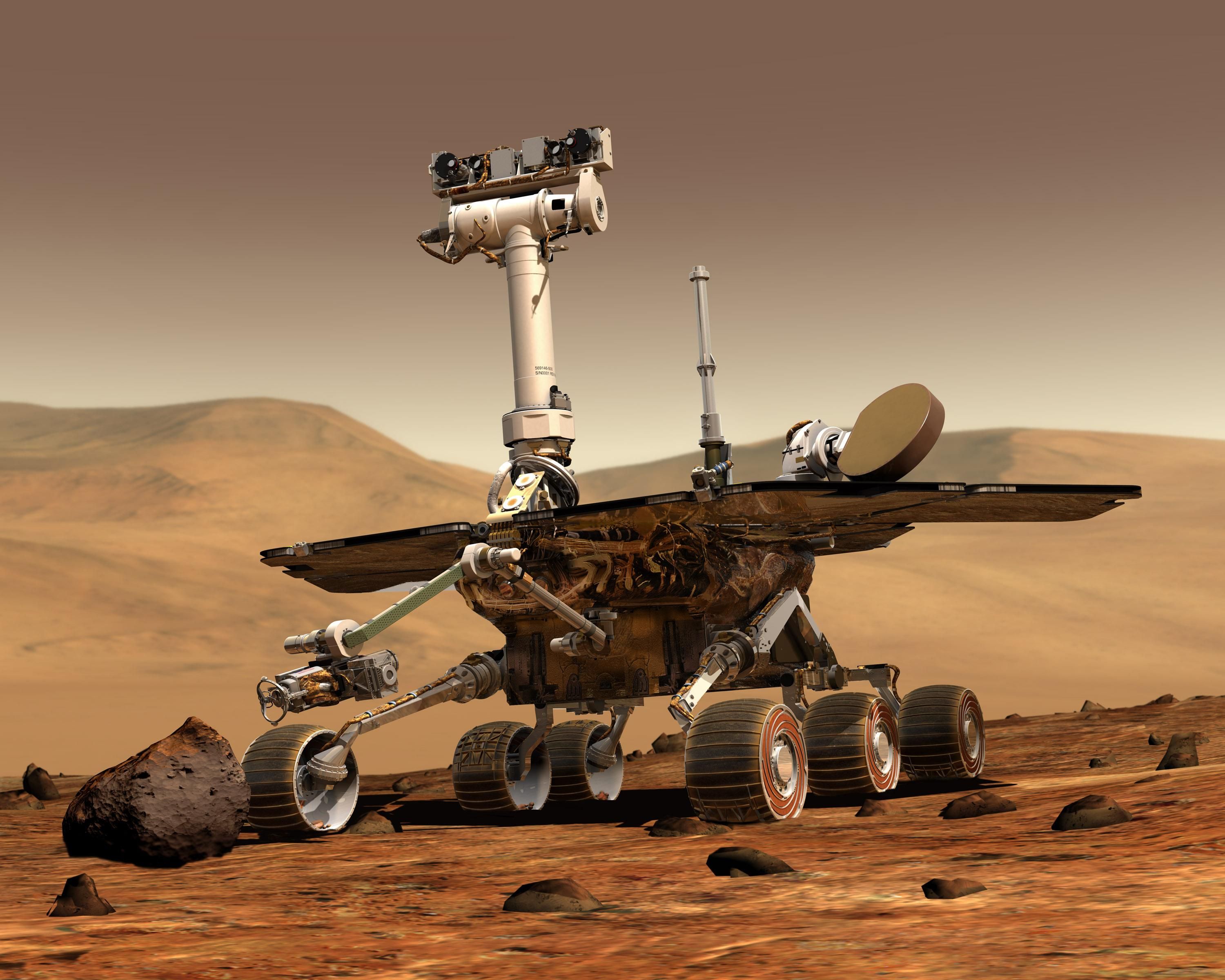NASA’s Opportunity rover, a robotic vehicle that explored Mars for nearly 15 years, broke the record for the longest-working robot on the Martian surface. But it wasn’t meant to last that long! Let’s look back at exactly how Opportunity exceeded all expectations.
The Opportunity Timeline
Before we look at the reasons why Opportunity lasted so long, let’s take a moment to appreciate the rover’s inspiring timeline:
|
Date |
Event |
|---|---|
|
July 7, 2003 |
The Opportunity rover launched on a Delta II Heavy rocket from Cape Canaveral in Florida. |
|
January 24, 2004 |
It landed in the Meridiani Planum, a large plain straddling Mars’ equator. |
|
April 26, 2004 |
NASA anticipated that 90 Martian days (sols)—roughly 92.5 Earth days—after the landing date would mark the end of the mission. |
|
March 22, 2010 |
Opportunity’s sibling, Spirit, stopped communicating with Earth, outliving its intended mission length by a factor of over 25. |
|
June 10, 2018 |
Opportunity’s last communications were received on Earth, finalizing its operation that lasted nearly 60 times its intended lifespan. |
Martian Winds Kept It Clean
Mars’ surface is covered in dust from the planet’s red rocks rich in iron oxides. Fierce storms whip up this dust, which, when it finally rests, often reshapes the Martian landscape. Although large-scale storms occur every so often, they can crop up suddenly and last months.
NASA scientists and engineers thought that the layers of dust that would descend on Opportunity would quickly cover up its solar panels, meaning the rover wouldn’t be able to generate enough energy to continue operating beyond its 90-sol mission length.
The images below, taken by NASA’s Curiosity rover, show just how murky Mars really gets. The image on the right was taken only three days after the image on the left, which shows how quickly visibility can drop in Mars’ thin atmosphere.
However, experts didn’t quite realize the positive effect that these Martian storms could have by clearing the red dust from the rover’s panels, giving it unexpected access to solar energy with each changing season.
It Had the “Finest Batteries in the Solar System”
It goes without saying that for a rover nearly 250 million miles away from Earth at its furthest distance to survive so long, it needs cutting-edge specifications, and the vehicle’s battery did a lot of the heavy lifting in this category.
Speaking in a teleconference in 2018—shortly before the mission ended—Rich Zurek, the Mars Program Office chief scientist at NASA’s Jet Propulsion Laboratory (JPL) in Pasadena, California, said, “They are, really, the finest batteries in the solar system.” Zurek’s colleague, John Callas, project manager of NASA’s Mars Exploration Rover project, added, “Although Opportunity’s batteries [went] through more than 5,000 charge-discharge cycles, they [retained] 85 percent of their original capacity.”
The two rechargeable lithium-ion batteries, which were developed with an electrolyte adopted from the Mars Surveyor Program 2001 mission, were optimized for high wattage output. Lithium-ion batteries are well-known for being long-lasting, and NASA managed to extend their life cycle by storing them in onboard warming boxes at night to avoid any damage caused by the planet’s cold nights.
Opportunity’s Robust Tech Was Built to Last
With any space mission, you plan for the equipment to last for the scheduled mission length, but you hope for it to last longer than that. And Opportunity did just that, thanks to state-of-the-art science instruments, electronics, and materials.
Opportunity’s wheels contributed to the rover’s longevity. Despite NASA engineers expecting the robot to travel 1,100 yards during its mission, it managed to travel over 28 miles, largely thanks to its wheels being made from aluminum—a durable metal that can withstand extreme conditions and temperatures—reinforced with three rims and a thin running surface.
However, having a high-quality battery and long-lasting wheels is no good if the solar panels can’t absorb energy. In Opportunity’s case, the panels were composed of gallium indium phosphorus, gallium arsenide, and germanium to form three layers of photovoltaic cells, thus maximizing energy intake. They were able to produce around 900 watt-hours of energy per day in good conditions, which is roughly equivalent to the amount of energy needed to power a vacuum cleaner for an hour and a half. With Opportunity only using between 300 and 900 watt-hours of energy per day, the solar panels could usually generate more than enough power.
NASA’s World-Leading Engineers Deserve Credit
According to National Geographic, NASA engineers working on the Opportunity mission tested hardware and software in back-to-back eight-hour shifts, 24 hours a day, to give the rover the best chance of success. Paying tribute to her team, NASA JPL deputy project manager Jennifer Trosper said, “We worked hard, we designed it right, we did the due diligence and the engineering, and those things just lasted forever.”
What’s more, the NASA team designed an Earth-based twin of Opportunity, meaning they could (as closely as possible) pilot tests on Earth before sending commands to the Martian rover. For example, when Opportunity got stuck in a thick bowl of sand in 2005, engineers worked for five weeks using images and spectroscopy to emulate the sand trap and free it.
It Finally Succumbed to Martian Conditions
Despite its brilliance, Opportunity fell silent on June 10, 2018, when one of the most intense dust storms ever seen on Mars swept over the rover and forced it into survival mode. Sadly, despite NASA’s hope that it would reawaken—as it had many times previously—it was one storm too many. Engineers believe that either the dust covering Opportunity was so thick that the rover couldn’t recharge and eventually shut itself down, or the storm was so intense that it damaged the rover’s internal instruments—or a combination of both.
Opportunity is believed to still be on Mars’ surface today in a valley called Perseverance Valley, named so as a homage to the rover’s record-breaking plight. This photograph, which was taken by NASA’s Mars Reconnaissance Orbiter in September 2018, shows NASA’s Opportunity rover as a solitary blip on Mars’ surface.
The NASA Opportunity rover isn’t the only feat of human engineering in the Solar System. One engineering marvel—the International Space Station, which you can see as it flies overhead—has been in orbit since November 1998, with nearly 20 additional modules being added over time to grow it to the size of an American football field.






